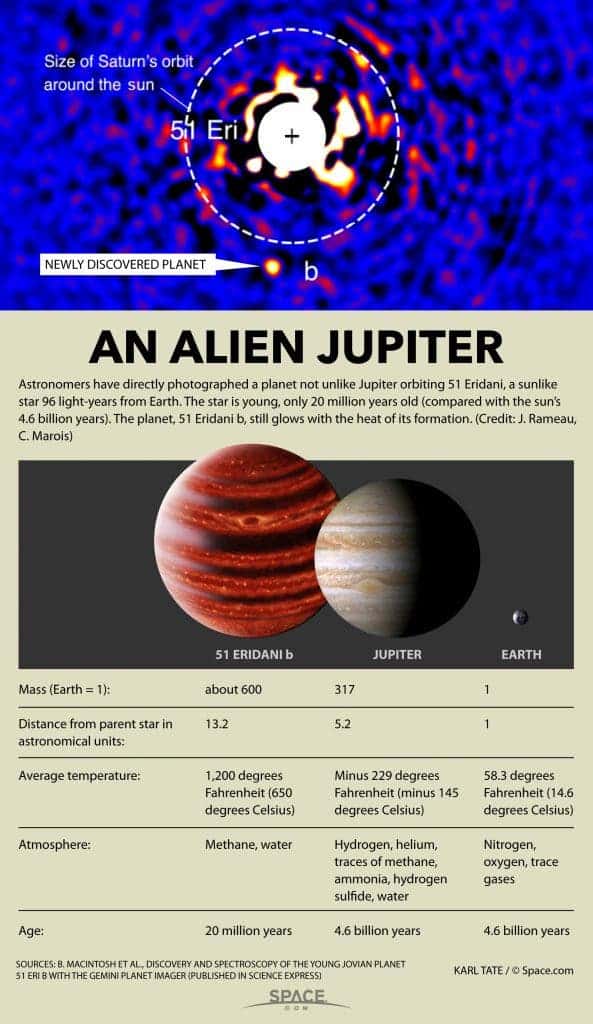An exciting “infant Jupiter” rich in methane has been discovered using an Earth-bound telescope. The newly found planet might reveal how planets like Jupiter formed and developed during their early stages.

It’s believed that Jupiter played a pivotal role in the early days of the Solar System; one of the most popular theories, the Grand Tack Hypothesis proposes that Jupiter traveled through the Solar System in the earliest 1–10 million years of the Solar System’s existence, fundamentally altering the orbits of other planets, altering the orbits of asteroids, and even smashing some early super-Earths. Astronomers have discovered nearly 500 planetary systems each with multiple planets, and typically these systems include a few planets with masses several times greater than Earth’s (super-Earths), orbiting closer to their star than Mercury is to the Sun, and Jupiter-like gas giants are also often found close to their star. If Jupiter went berserk in the early days, it may have smacked these initial planets out of their orbit. This is where “Baby Jupiter” could help us.
51 Eridani b circles a very young sun-like star some 96 light years away from Earth. The planet is two times bigger than Jupiter and is positioned in its solar system approximately like Saturn is in ours. Still radiating heat from its formation less than 20 million years ago, 51 Eridani b glows in infrared light, which is how astronomers were able to spot it.
“51 Eri b provides an opportunity to study in detail a planet that is still influenced by its formation initial conditions,” Stanford University astronomer Bruce Macintosh and colleagues wrote in this week’s issue of the journal Science.

It’s estimated that the planet’s temperature is currently 800 degrees Fahrenheit (426.6 degrees Celsius), which is hot enough to melt lead and make it glow. The heat comes from the energy it still stores from its formation.
“It’s young enough to remember how it formed,” said Bruce Macintosh, principal investigator of GPI. “The details of its formation process affect how bright it is.”
For this, scientists used the Gemini Planet Image (GPI), which is mounted on top of a telescope in Chile. This finding is especially noteworthy because it signals a success for the GPI, which was built specifically for identifying so-called young Jupiters – hot, young gas giants that may hold clues for what happened in our solar system.
Another advantage of the Gemini Observatory is known as Queue Mode. Observations are prioritized based on viewing conditions. I for one, am thrilled by this new telescope. Here are two additional images taken with it:



